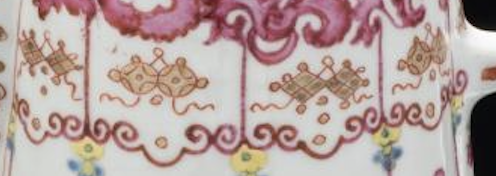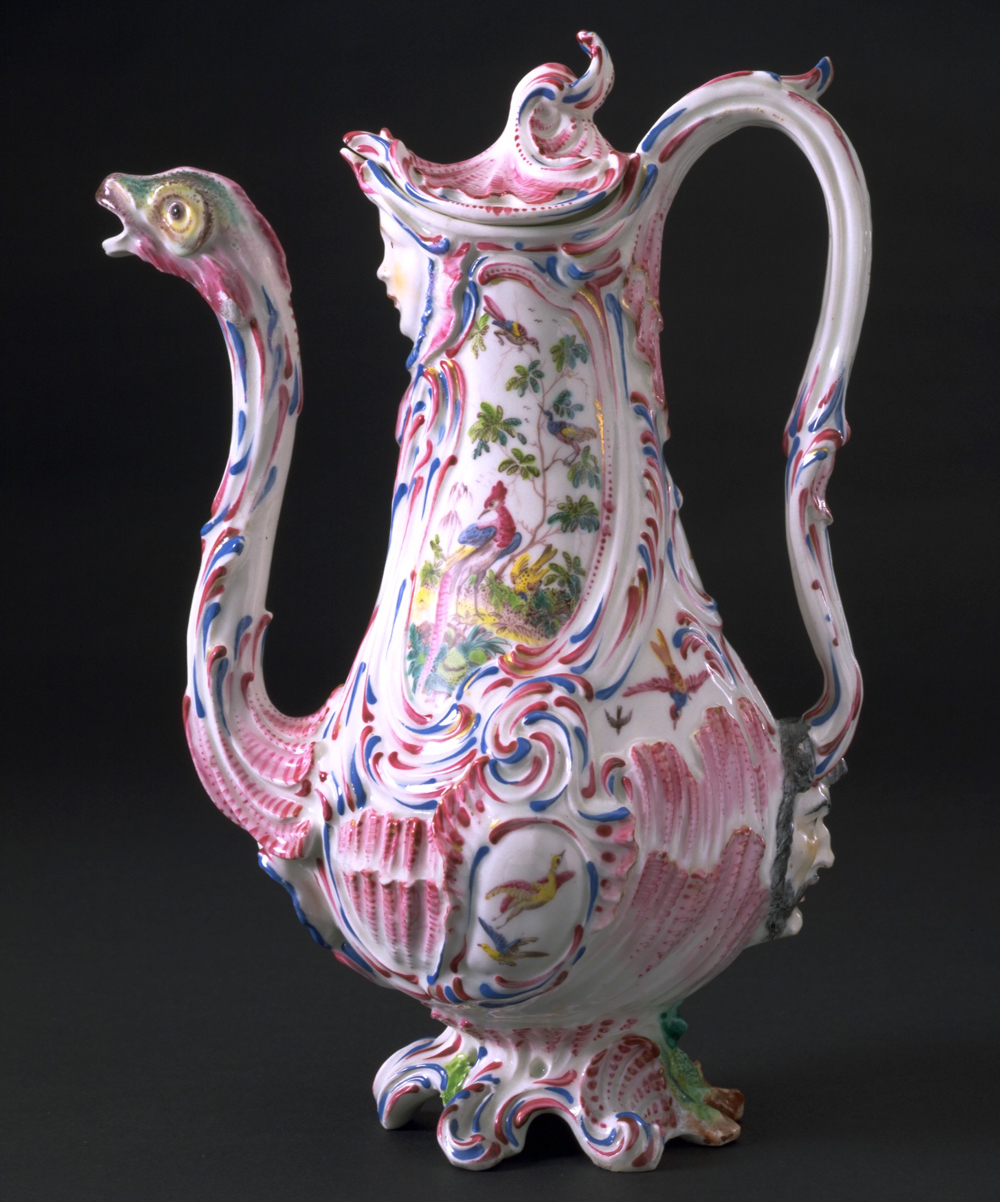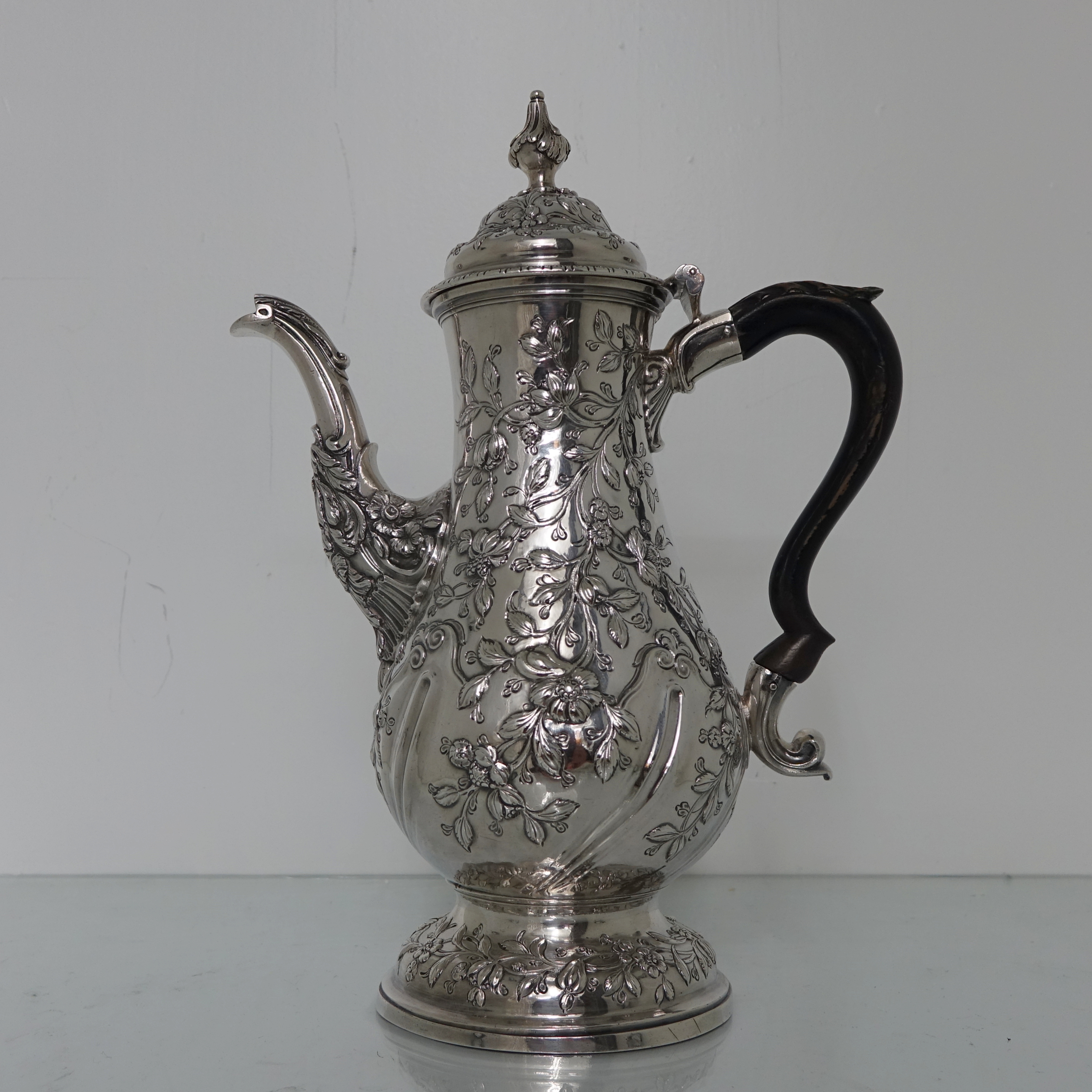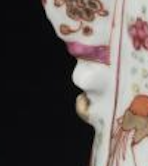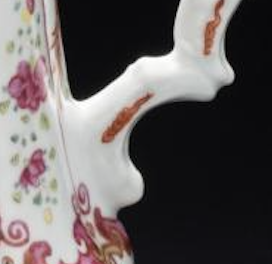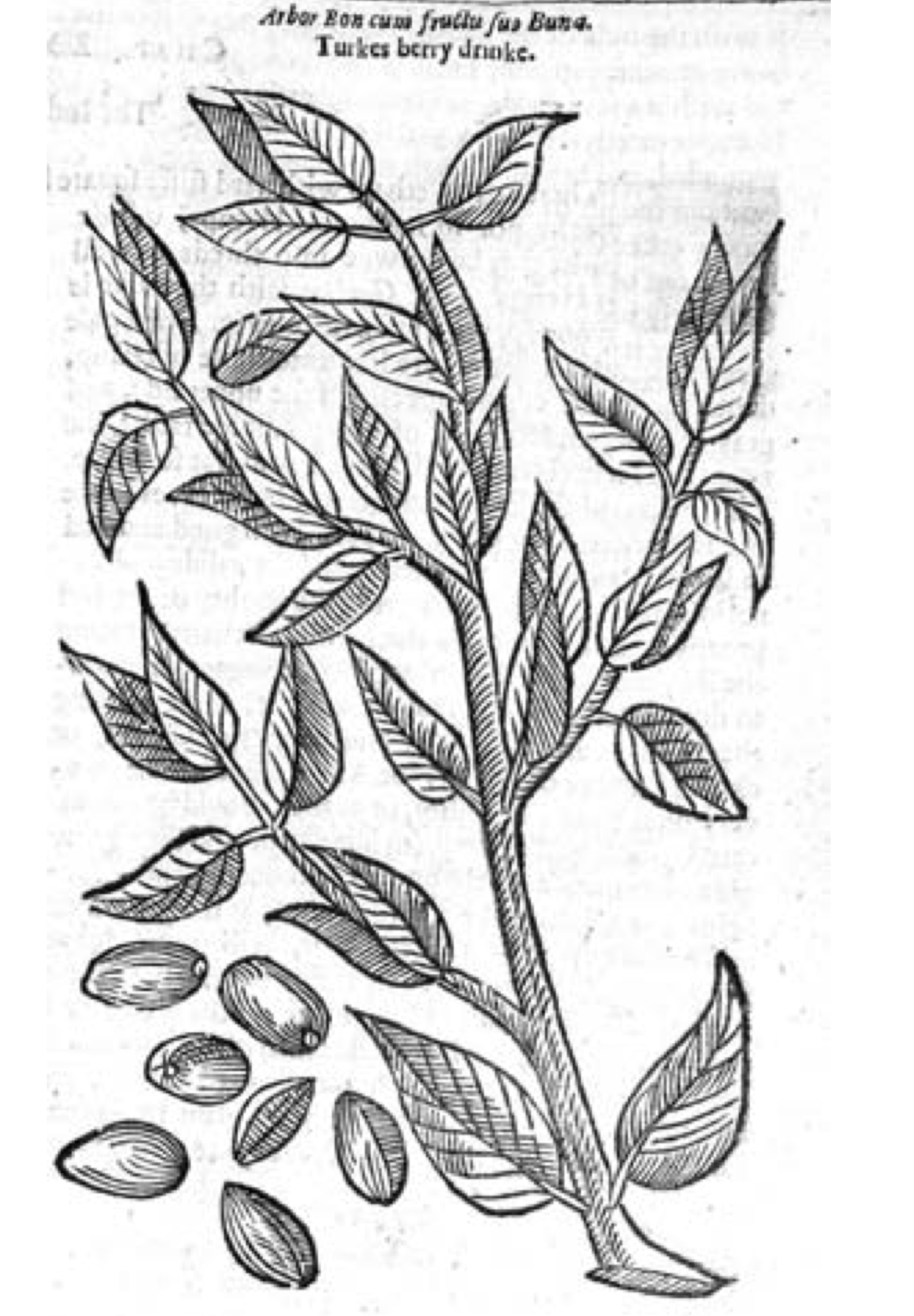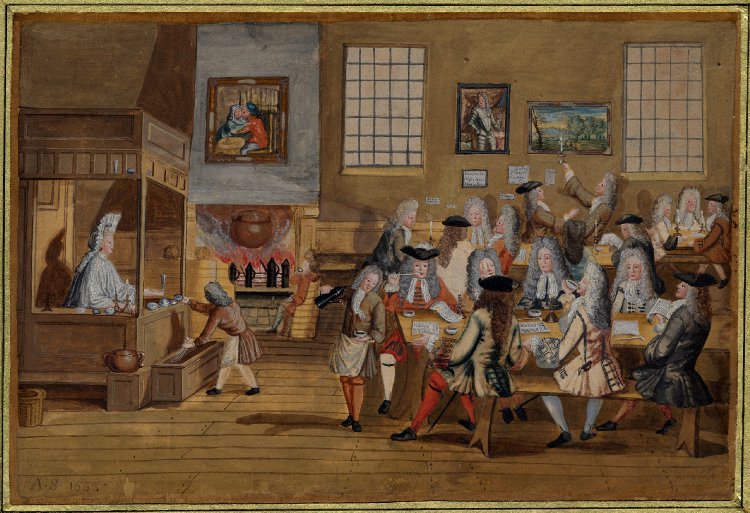CONTEXTUAL ANALYSIS ON THE FORM, STYLE AND SHAPE OF THE CHINESE COFFEE POT
- FORM OF COFFEE POT
- EVOLUTION OF COFFEE POT AND COFFEE GRINDER IN 1700-1800
- HOW THE EVOLUTION OF COFFEE POT AFFECTED THE FORM OF THE CHINESE COFFEE POT
- STYLE AND SHAPE
- ROCOCO
- DECORATIVE ARTS
- ELEMENTS
- ROCOCO COFFEE POTS MADE IN EUROPE
- HOW ROCOCO INFLUENCED THE SHAPE OF THE CHINESE COFFEE POT
FORM OF COFFEE POT
In this section, the form is defined to be physical shape or the coffee pot and the context will be used to analyse on the 3D shape of the Chinese coffee pot, not including the 2D element such as the painting and the colour. I will begin by summarising the timeline of the change of a coffee pot itself and from there, the element of form that is applied on the Chinese Coffee Pot will be emphasised as well.
EVOLUTION OF COFFEE POT AND COFFEE GRINDER IN 1700-1800
- In 1672, Silver coffee pots were first used by Pascal at St. Germain’s fair in Paris. From this point onwards, English and American silversmiths began to create the most amazing forms of silver coffee pots. The oriental serving pot was nearly always made of metal, tall, and, in old models, of graceful curve, with a slightly twisted ornamental beak in the form of an S, attached below the middle of the vessel. A handle ornamented in the same way formed a decorative balance.
- In 1692, the lantern straight-line coffee serving pot with true cone lid, thumb-piece, and handle fixed at right angle to the spout, was introduced into England, succeeding the curved oriental serving pot.
- At the beginning of the 18th Century the consumption of coffee (as well as other beverages including tea and chocolate) escalated in popularity, resulting in the mass manufacture of coffee pots. Because of this surge of popularity, the 1700s saw the dawn of beautiful coffee pots. At this period, silver, gold, and delicate porcelain serving pots were the vogue among European royalty.
- In 1700, coffee pots made of cheaper metals, like tin and Britannia ware, began to appear on the home tables of the people.
- In 1701, silver coffee pots appeared in England having perfect domes and bodies less tapering.
- In 1704, Bull’s machine for roasting coffee was patented in England. This probably marks the first use of coal for commercial roasting. Soon after this, coffee pots began to be crafted in a tapered cylinder shape with a high domed cover. The spout was placed low on the body, along with the classic right angled handle.
- Circa 1710, octagonal designs were introduced. This style encompassed a flatter wider base, along with a top in the tear-shaped drop form. A
- By 1714, the thumb-piece on English serving pots had disappeared, and the handle was no longer set at a right angle to the spout. The spouts on pots were placed on the opposite side of the handle.
- In 1720, coffee grinders were so common in France that they were to be had for a dollar and twenty cents each. Their development by the French had been rapid from the original spice grinder.
- In the 1730s, the incurved base of the coffee pot became standard along with the plain tapered form.
- Around the 1740s, the pear shaped coffee pot came into fashion and prevailed until the 1760s. These jugs tended to sport shorter spouts than the previous type. This design is likely to have been originally intended for Turkish coffee which was of a much thicker consistency.
- During the Rococo(or ˜late baroque”) era the popular style of coffee pot changed yet again. The pots became massive and even more impressive, in a more ornate style. Festoons also became a prominent ornament.
- By the 1780s, filters were added to coffee pots in the form of a cloth or sock placed over the mouth.
- In 1840, the Napier vacuum coffee machine came in to the game.
- In 1908, the first drip coffee maker was introduced thus began the demise of the coffee pot.
HOW THE EVOLUTION OF COFFEE POT AFFECTED THE FORM OF THE CHINESE COFFEE POT

From the timeline, we can see how in the decade, there are many innovation and new ideas about the element and shape of the coffee pot in the world. The Chinese Coffee Pot has many physical forms being taken and adapted form the different timing during the century. It all started as the porcelain coffee pot become the vogue among European royalty.
Some basic elements of the Chinese Coffee Pot is following the old convention that has been around for the form of coffee pot before 1735. They include the tear-shape drop form for the knob (around 1710) at the top of the lid, the spouts that is place directly opposite side of the handle (by 1714) as well as the incurved base that was the standard of coffee pots in the 1930s.
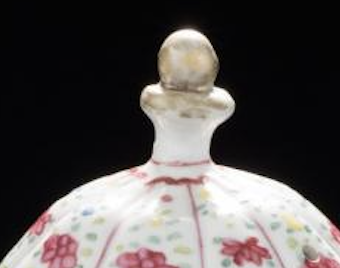
Generally, it has pear-shaped body that was in fashion in the 1740s in which it also has shorter spouts. As the Chinese Coffee Pot was made around 1735, it means that the shape of the pot was up to the latest trend during the period. It supports the fact that
Not only the form was made to keep up with the latest design, there is some thing that bothered me as based on the timeline, the thumb-piece on English serving pots had disappeared by 1714 while the Chinese Coffee Pot was still made with it. A possibility is that England (and its colonies) might not be the main export market for porcelain during the YongZheng era. Or another possibility is that if England was a market for Chinese porcelain, that the thumb-piece was still made in order to make it stood out of competitors due to its unique and unusual element in the English market. Either way, it seems that the industry of coffee pot porcelain was versatile during the time and the competition might be high and therefore following and adapting to the trend of form of coffee pot might have a been an important and carefully-considered strategy when the Chinese Coffee Pot was made to remain competitive.
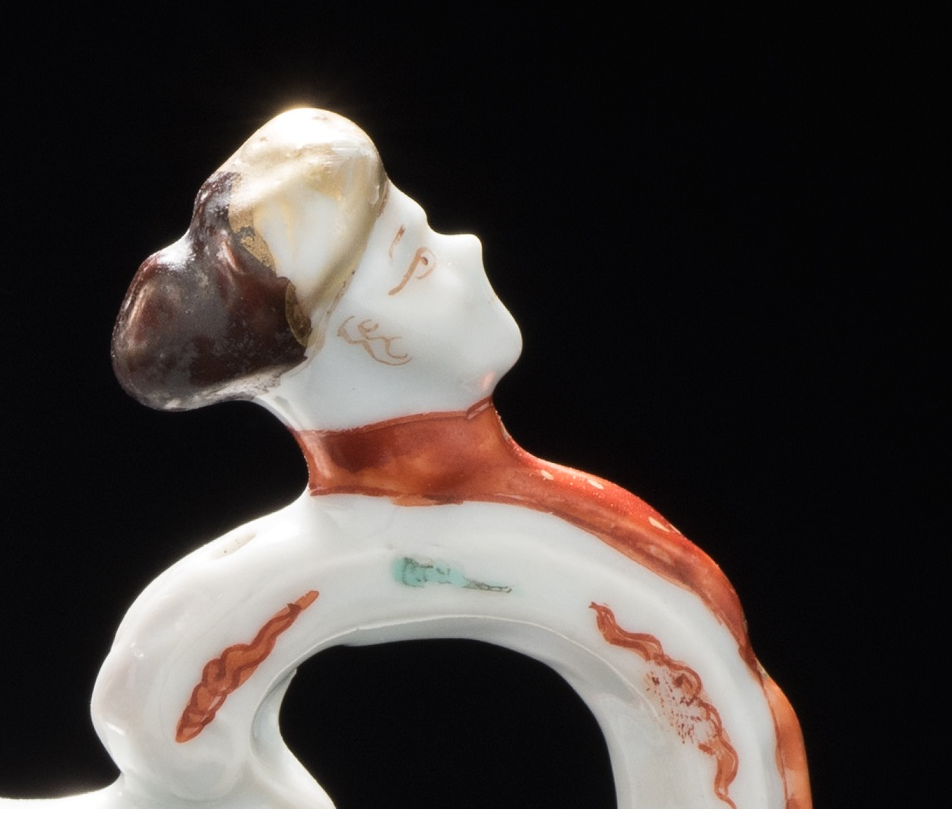
STYLE AND SHAPE
During the YongZheng era, many porcelains were influenced by the European style. Especially for the Chinese Coffee Pot, the style and movement that influenced it the most was the Rococo. Therefore, I would like to begin by introducing a little bit about Rococo.
ROCOCO
Rococo describes a type of art and architecture that began in France in the mid-1700s (about 1730-1770). It is characterised by delicate but substantial ornamentation as a highly ornamental style of art, furniture, and interior design became popular in France. It takes its name from the French rocaille (pronounced ‘rock-eye’), which means the rock or broken shell motifs that often formed part of the designs. Characterised by profuse, often semiabstract ornamentation and lightness of colour and weight.
DECORATIVE ARTS
Patrons of the arts were not exclusively royalty and aristocrats, so artists and craftsmen were able to market to a wider audience of middle-class consumers. Scale was downsized, paintings were sized for salons and art dealers instead of palace galleries and elegance was measured in small, practical objects like chandeliers and soup tureens. Clocks, picture frames, mirrors, mantel pieces, and candlesticks were some of the useful objects beautified to become known collectively as “decorative arts.”
ELEMENTS
- Natural motifs. Are a featured in Rococo, patterns were intricate and details delicate.
- Elaborate carved forms. As a style developed by craftspeople and designers rather than architects, there was importance of hand-worked decoration in Rococo design.
- Asymmetry. Rococo design is often not symmetrical as shapes were complex.
- S and C scrolls. Curved forms which resemble the letters S and C are common in Rococo.
- Rocaille. Refers to rocks, shells, and the shell-shaped ornaments used on fountains and the decorative arts of the time. Taking various forms, it can look like a piece of frilly carving, some form of water or eroded rock.
- Acanthus leaf (Acanthus mollis) is one of the basic motifs of Rococo design, it used the stylised version of which did not really look like the real leaf shape.
- Colors ar often light and pastel, with a bold splash of brightness and light. Also, the application of gold was purposeful.
ROCOCO COFFEE POTS MADE IN EUROPE
To give a clearer idea on how the style would affect a coffee pot in the Rococo period, follow are some coffee pots made in Europe that is influenced by Rococo.
|
|
|
Taking the two coffee pots, there is a certain feeling that is invoked. If I have to describe it on my own word, it would be an ‘ever-flowing intricately detailed object with complex elements’. Even though the material, colour and details of them are different, one can clearly see that they are related from the 3D form itself. The idea of detailed acanthus leaves coming out from the basic form at different spots, the presence of S and C curves throughout and the asymmetry of both are applications of Rococo.
HOW ROCOCO INFLUENCED THE SHAPE OF THE CHINESE COFFEE POT
I will try to assess how far the shape of Chinese Coffee Pos has been influenced and list out the elements that might be considered to be influenced by Rococo. (The analysis in this part will focus on the 3D shape and further analysis on the 2D elements will be shared on the next section.
- Natural motifs: this elements are not really applicable in the 3D form of the Chinese Coffee Pot as the surface of the porcelain seems smooth. However, it is applied via the painting on the porcelain.
- Elaborate carved forms: it is applicable in the Chinese Coffee Pot as seen from the carving of a lady head at the top of the handle. The small size and details might have shown the delicate hand-work decoration prominent in Rococo.
- S and C scrolls: this elements are found in the Chinese Coffee Pot

S scroll on the Chinese Coffee Pot. - Rocaille: It is not really seen in the 3D form of the Chinese Coffee Pot but more in the 2D painting itself.
- Acanthus leaf (Acanthus mollis): I am not really sure on this one but this part might have been intended to be in a shape of acanthus leaf shaped in the 3D form.
After the analysis, it is evident for me to say that Rococo has influenced the shape of the Chinese Coffee Pot to a certain extent. It is not into a very elaborate and detailed like the one made in the Europe as the surface of the pot can be considered to be smooth, but it incorporated small details of Rococo elements. Therefore, I would say that even though the pot was influenced by Rococo and made for the demand of Europe, the Chinese still keep the basic essence of the Chinese porcelain (texture and painting) while adapting some parts into shapes that are relatable more relatable to Rococo in the shape way.
[Additional information on form of coffee pot]
EARLY GRINDERS, ROASTERS AND POTS OF COFFEE
During my research, I found these images interesting and therefore would like to share some here. It really show how within the not so long (about 2 century) time period, there are so many improvement and changes in apparatus related to coffee making. It really support that a drink of coffee has been known for a long time and continuously being developed by people form different regions time to time.







BREWING COFFEE
As I wonder how the old coffee was made and how the coffee pots were actually being used, I came across this information which describe one of the method. I find it interesting to know.
Humphrey Broadbent, “the London coffee man” who wrote a treatise on the True Way of Preparing and Making Coffee, wrote in 1722 the following infusion method procedure:
“Put the quantity of powder you intend, into your pot (which should be either of stone, or silver, being much better than tin or copper, which takes from it much of its flavour and goodness) then pour boiling-hot water upon the aforesaid powder, and let it stand to infuse five minutes before the fire. This is an excellent way, and far exceeds the common one of boiling, but whether you prepare it by boiling or this way, it will sometimes remain thick and troubled, after it is made, except you pour in a spoonful or two of cold water, which immediately precipitates the more heavy parts at the bottom, and makes it clear enough for drinking.”
Next part: CONTEXTUAL ANALYSIS ON THE COLOUR OF THE CHINESE COFFEE POT
Previous part: CONTEXTUAL ANALYSIS ON HOW COFFEE DRINKING AFFECTED THE DEMAND OF THE CHINESE COFFEE POT
SOURCES AND REFERENCES
- Barrett, Cyril. “The Are of Rococo.” Studies: An Irish Quarterly Review49, no. 194 (1960): 160-72. http://www.jstor.org.ezlibproxy1.ntu.edu.sg/stable/30099143.
- Craven, Jackie. “Rococo and the Elegant Designs of the Late Baroque Period.” Thoughtco. Accessed November 06, 2018. https://www.thoughtco.com/rococo-art-architecture-4147980.
- “Early History of Coffee Drinking.” Accessed November 03, 2018. http://www.web-books.com/Classics/ON/B0/B701/08MB701.html.
- “Georgian Silver Rococo Coffee Pot London 1769 Charles Wright.” Paul Bennett Antiques. Accessed November 06, 2018. http://www.paulbennettonline.com/shop-silver-2/all-products/georgian-silver-rococo-coffee-pot-london-1769-charles-wright/.
- “History of the Coffee Pot.” AC Silver Blog. Accessed November 06, 2018. https://www.acsilver.co.uk/shop/pc/coffee-pot-history-d112.htm.
- Museum, Albert, and Digital Media. “Victoria and Albert Museum.” Introduction to 20th-Century Fashion. April 11, 2013. Accessed November 06, 2018. http://www.vam.ac.uk/content/articles/s/style-guide-rococo/.
- Scalbert, Irénée. “The Rococo Revolution.” AA Files, no. 39 (1999): 10-20. http://www.jstor.org.ezlibproxy1.ntu.edu.sg/stable/29544153.
- Shovova, and Yugen Tribe. “Celebrate the Elegance and Exuberance of French Rococo Art.” My Modern Met. April 28, 2018. Accessed November 06, 2018. https://mymodernmet.com/rococo-art/.
- Van Rensselaer, M. G. “Rococo.” The Art Journal (1875-1887), New Series, 5 (1879): 293-98. doi:10.2307/20569415.
